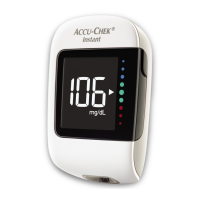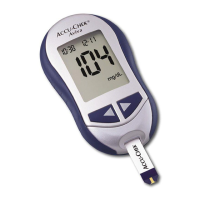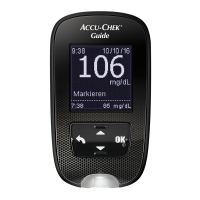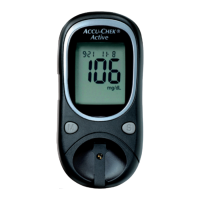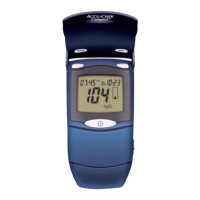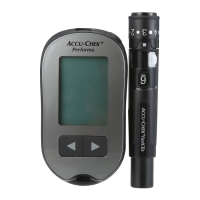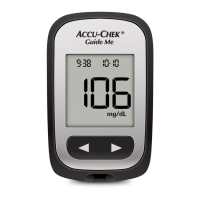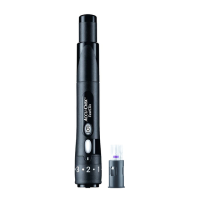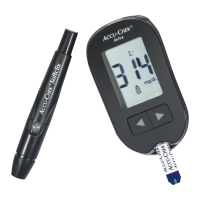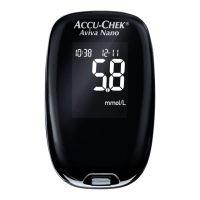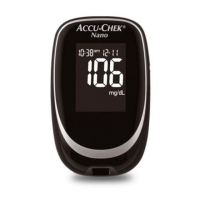Page 18 of 39
In-service plan for blood glucose testing
Specimen Collection
NOTE: Follow all facility safety and infection control policies when collecting blood samples.
NOTE: Consider using the Capillary Blood Sampling – interactive learning tool in this section.
Fingerstick Sample Collection
NOTE: Before performing a ngerstick blood glucose test, carefully assess the patient for any
indication that ngerstick blood glucose testing may not be appropriate. Consider the following
potential interferences and compromising conditions:
• Hematocrit should be between 10–65%.
• Lipemic samples (triglycerides) in excess of 1800 mg/dL may produce elevated results.
• Blood concentrations of galactose >15 mg/dL will cause overestimation of blood glucose
results.
• Intravenous administration of ascorbic acid which results in blood concentrations of ascorbic
acid >3 mg/dL will cause overestimation of blood glucose results.
• If peripheral circulation is impaired, collection of capillary blood from the approved sample
sites is not advised, as the results might not be a true reection of the physiological blood
glucose level. This may apply in the following circumstances: severe dehydration as a
result of diabetic ketoacidosis or due to hyperglycemic hyperosmolar non-ketotic syndrome,
hypotension, shock, decompensated heart failure NYHA Class IV and or peripheral arterial
occlusive disease.
• This system has been tested at altitudes up to 10,000 feet.
• This system should not be used for patients who are critically ill.
1. Assemble the materials you will need to collect a blood sample (gloves, skin preparation
pad, single use lancet device, gauze or cotton ball).
2. Wash hands and don gloves and any other personal protective equipment as required by
infection control and isolation policies and procedures.
3. Follow all facility infection control protocols when testing isolation patients.
4. Assess the patient for compromised peripheral blood ow. Fingertips should be warm
and pinkish when the hand is gently massaged from the palm outward to the ngertips.
Fingertips should not appear pale, bluish or mottled. Patients with compromised peripheral
blood ow are not good candidates for ngerstick blood glucose testing.
5. Select the nger site for puncture. It is preferred to select the side of a middle or ring nger
that has not been punctured recently.
6. Enhance blood ow to the selected puncture site by means of:
a. Warming the intended puncture site
b. Instructing the patient to ex and move the arm, wrist, hand and ngers while you
are assembling your supplies and preparing the system for testing
c. Positioning the intended puncture site below heart level
d. Gently massaging in an outward (distal) direction from the palm and the base of
the nger to the ngertip
